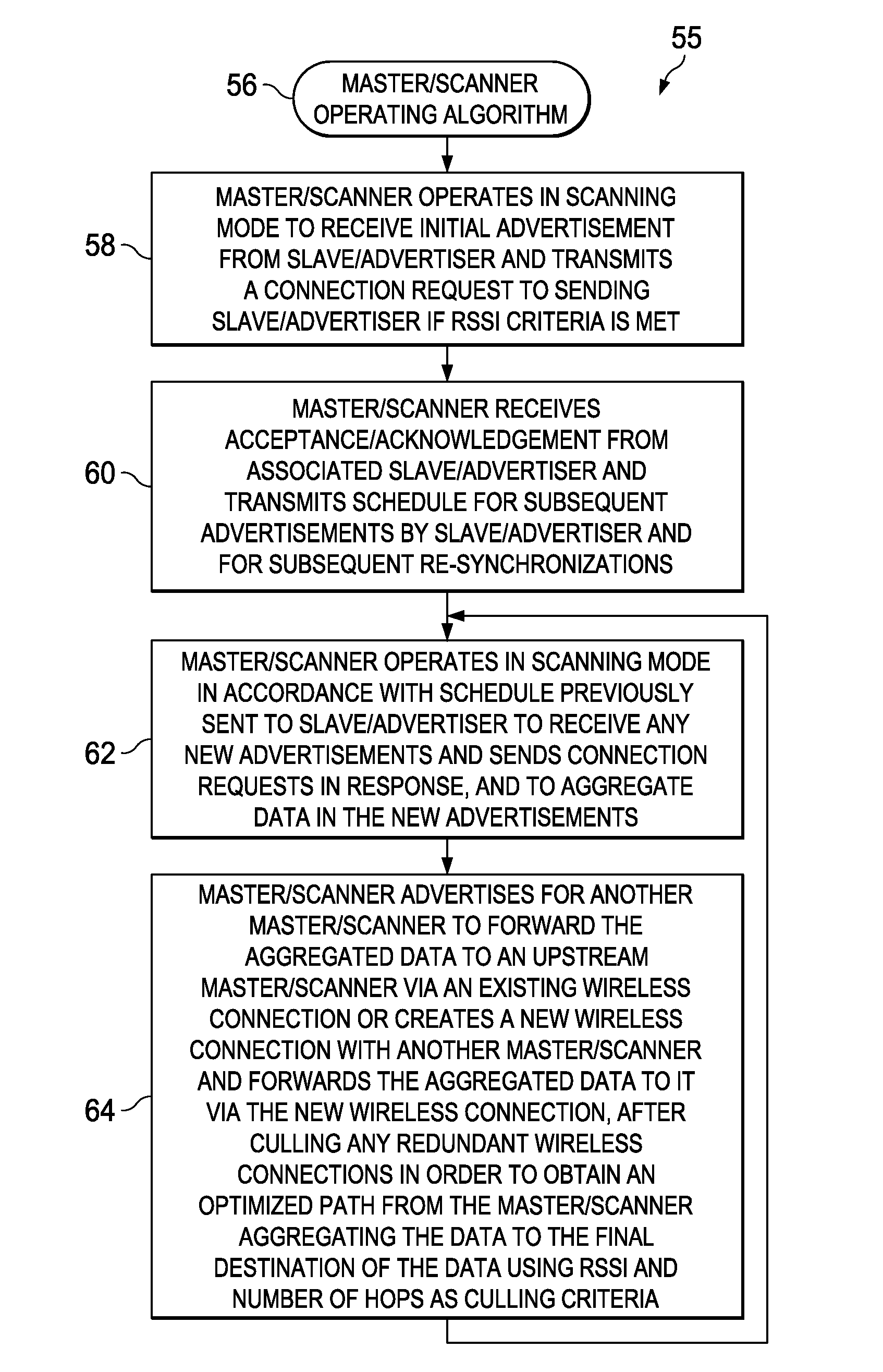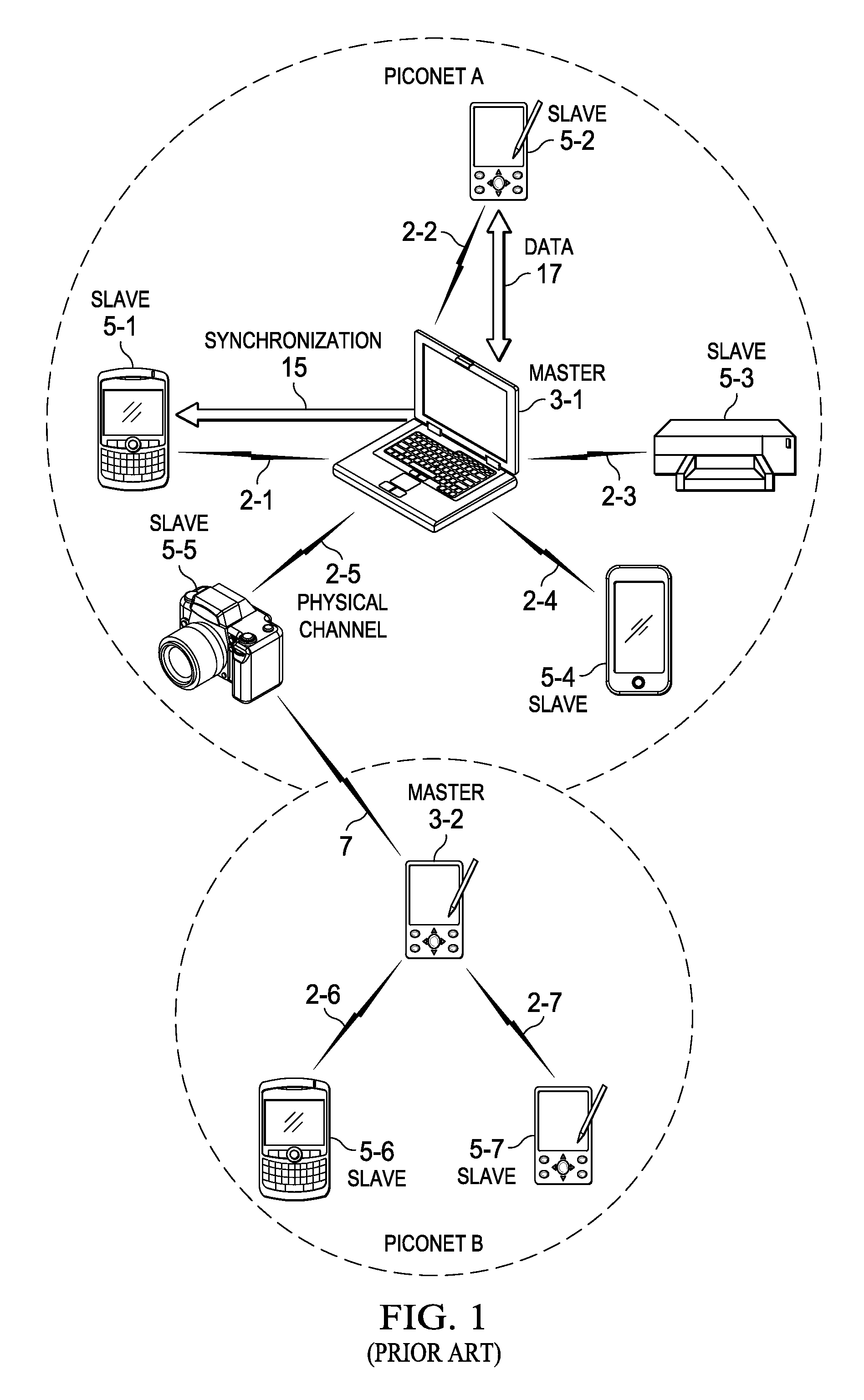Ble scatternet system and method
a scatternet and low-energy technology, applied in the field of low-power ble (bluetooth low-energy) networks, can solve the problems of inability to inability to accommodate piconet slave/advertiser devices which must operate with very little power/energy, and inability to operate zigbee standards in mobile phones, etc., to achieve low-power/low-energy effects
- Summary
- Abstract
- Description
- Claims
- Application Information
AI Technical Summary
Benefits of technology
Problems solved by technology
Method used
Image
Examples
Embodiment Construction
[0059]FIG. 2 shows an improved, very low-power scatternet 1 including a piconet A and a piconet B each including a master / scanner device capable of wireless communication with a number of nearby slave / advertiser devices. In piconet A, master / scanner 3-1 is capable of wireless communication with advertisers 5-1, 5-2, 5-3, 5-4, and 5-5 through wireless links 2-1, 2-2, 2-3, 2-4, and 2-5, respectively. Similarly, in piconet B, master / scanner 10-2 is capable of wireless communication with advertisers 5-6 and 5-7 through wireless links 2-6 and 2-7, respectively. Each slave / advertiser can have a wireless link with only one master / scanner. Each slave / advertiser and each master / scanner includes at least a transceiver and a processor with integrated memory running the BLE protocol stack. The BLE protocol stack consists of software that implements the BLE protocol as defined by the Bluetooth 4.0 core specification.
[0060]As shown in FIG. 7, a master / scanner 3 of the kind shown in FIG. 2 include...
PUM
 Login to View More
Login to View More Abstract
Description
Claims
Application Information
 Login to View More
Login to View More - R&D
- Intellectual Property
- Life Sciences
- Materials
- Tech Scout
- Unparalleled Data Quality
- Higher Quality Content
- 60% Fewer Hallucinations
Browse by: Latest US Patents, China's latest patents, Technical Efficacy Thesaurus, Application Domain, Technology Topic, Popular Technical Reports.
© 2025 PatSnap. All rights reserved.Legal|Privacy policy|Modern Slavery Act Transparency Statement|Sitemap|About US| Contact US: help@patsnap.com



